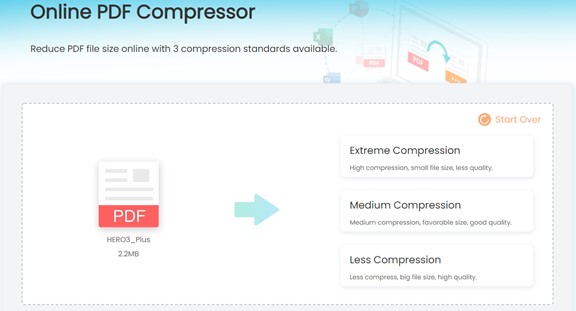

- #Image compression standards . pdf full#
- #Image compression standards . pdf code#
- #Image compression standards . pdf tv#
This makes it ideal for Internet/network applications-especially with large images and low bandwidths-as the image can be seen instantly on the decoding side, even with low-speed networks or image databases. Progressive coding, another feature of the JPEG 2000 standard, means that the bit stream can be coded in such a way as to contain less-detailed information at the beginning of the stream and more detailed information as the stream progresses. They can now use JPEG 2000 for new designs. To get around this problem, security system and equipment providers have had to develop their own compression schemes-or use the highly inefficient motion JPEG (M-JPEG) compression standard-in order to provide a compressed stream that contains every single field of the original. For this reason, legal issues restrict the use of MPEG compression in some security applications. MPEG systems, on the other hand, reduce the amount of data through temporal compression (which does not encode each frame as a complete image), so MPEG compression is not frame-accurate. JPEG 2000 is frame accurate, in that every single frame of the input is contained in the compressed format.
#Image compression standards . pdf code#
The operator on the receive side can decide what information to extract from the single code stream sent. High-resolution images can be stored on a hard-disk drive (HDD), while several lower-resolution images are displayed on monitors.


#Image compression standards . pdf tv#
This is not possible with any other compression standard because the image size, bit rate, and quality must be specified on the encode side and can not be determined or changed on the decode side.įor example, a closed-circuit TV (CCTV) security system can make use of this feature by sending a single JPEG 2000 code stream over a low bandwidth network. As such, it lends itself to applications that require high-quality images despite limitations on storage or transmission bandwidths.Īn important feature of systems based on JPEG 2000 is the ability to extract a variety of resolutions, components, areas of interest, and compression ratios from a single JPEG 2000 code stream. JPEG 2000 is the only standard compression scheme that provides for both lossless and lossy compression. Standards are required to ensure interoperability.
#Image compression standards . pdf full#
Compression is defined as lossless if full recovery of the original is available from the channel without any loss of information otherwise, it is lossy. When transmitting or storing picture information, compression must be employed to maintain picture resolution while making best use of limited channel bandwidth. With brief comparisons to other compression standards, this article is primarily intended to highlight some of the often misunderstood and rarely mentioned potential-become-actual benefits of JPEG 2000. Its architecture is useful for many diverse applications, including Internet image distribution, security systems, digital photography, and medical imaging.Ī lot of confusion exists as to what JPEG 2000 is and how it compares with other compression standards such as MPEG (Moving-Picture Experts Group) -2, MPEG-4, and the earlier JPEG. The JPEG ( Joint Photographic Experts Group) 2000 standard, finalized in 2001, defines a new image-coding scheme using state-of-the-art compression techniques based on wavelet technology.


 0 kommentar(er)
0 kommentar(er)
